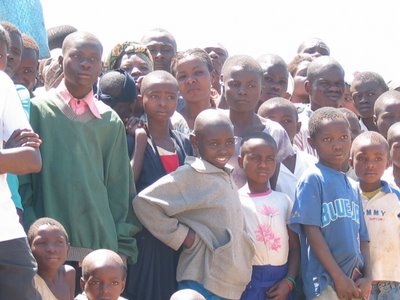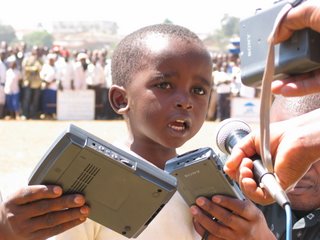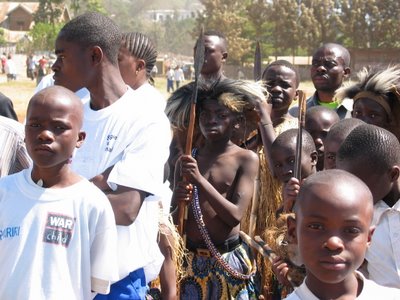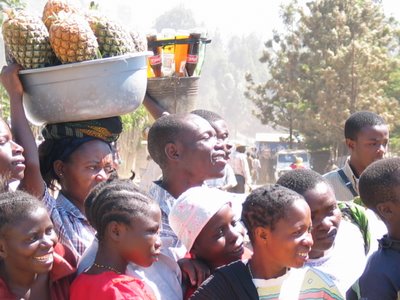Elle est courageuse!I’ve come into the office on Sunday morning to use the internet. We actually have electricity, but our ISP guys are obviously still in bed and haven’t bothered to turn on their equipment yet. Since there are no functioning banks here, the guys who provide the internet connection (by satellite, I presume, as there are no telephone landlines) also provide banking services. And since they’re Indian, they also supply the Indian Air Force (who are in charge of the small MONUC airbase an hour’s drive out of town) with spices. We were at the IAF base last week in order to interview the MONUC commander, who happens to be Dutch (we’re a Dutch NGO), as he was passing through. The Indians have developed a small haven of beauty and order amidst the general chaos; their camp is immaculate, with flowers everywhere, neatly bordered footpaths between the tents, a large well-tended vegetable garden, a fountain providing a gentle shower that sparkles in the sunlight as it waters the tiny lawn outside the tent that serves as their officers’ club. Even a separate, sign posted, and spotless toilet with imported toilet paper for women visitors to the camp – what a miracle! (I have photographs of what is meant to pass for toilets at a local school that I shall post to the site whenever I get around to it).
Hmmm, I meant to write about something completely different – how did I get on to toilets?!! As I was saying… the internet is down, so I’m writing this on the computer with the hope that I can post it onto the blog today, because my own computer still doesn’t have any internet access at all, so once the week begins it’s difficult for me to get access.
On my last post I mentioned the discussion sessions that we’re holding with teachers, to encourage them to find their own solutions to problems with the children. Many of the problems are fairly ordinary – the kind of problems with children’s behavior that teachers everywhere come across. When they began talking about problems with aggressive youngsters who are bullying others I wanted to tell them (but didn’t) about some of the schools in the US where metal detectors have been installed to catch the kids with guns and knives. Sometimes a ‘problem’ isn’t a problem, like the teacher who asked how to stop a pupil writing with his left hand. I was surprised (to say the least) that some teachers here still believe that left-handedness is something bad that can be corrected and they try to force the child to change. Some problems are caused by the general circumstances that make me want to give up in frustration at the seeming impossibility of changing things: many children go to school on an empty stomach, without even having had a glass of water or anything to eat the night before, so they fall asleep in class. Teachers want to know how to deal with the sleepy children. How can a child who hasn’t eaten stay awake or even concentrate in school? Many people are so poor that they may not even eat once a day. Another young adolescent boy often begins crying during class. Apparently he had witnessed the rape of his mother. Sexual violence against women and even very young girls here is epidemic and has contributed to the general breakdown of society, as many husbands and families will reject a wife or daughter who has been raped, such is the stigma attached to it.
All kinds of physical and mental disabilities are also common. One 17-year old girl we met at a school last week had no hands, only something that resembled a finger at the end of her wrist that enabled her to write, and no legs below her knees. She still manages to walk, somehow, and came into the room where we were holding our discussion session to meet us and proffered a stumpy arm to shake. I admired her tenacity in coming to school under such difficult circumstances – the other children are so distracted by her presence they don’t pay attention in class – and after she left the room I could only say “elle est courageuse!”











